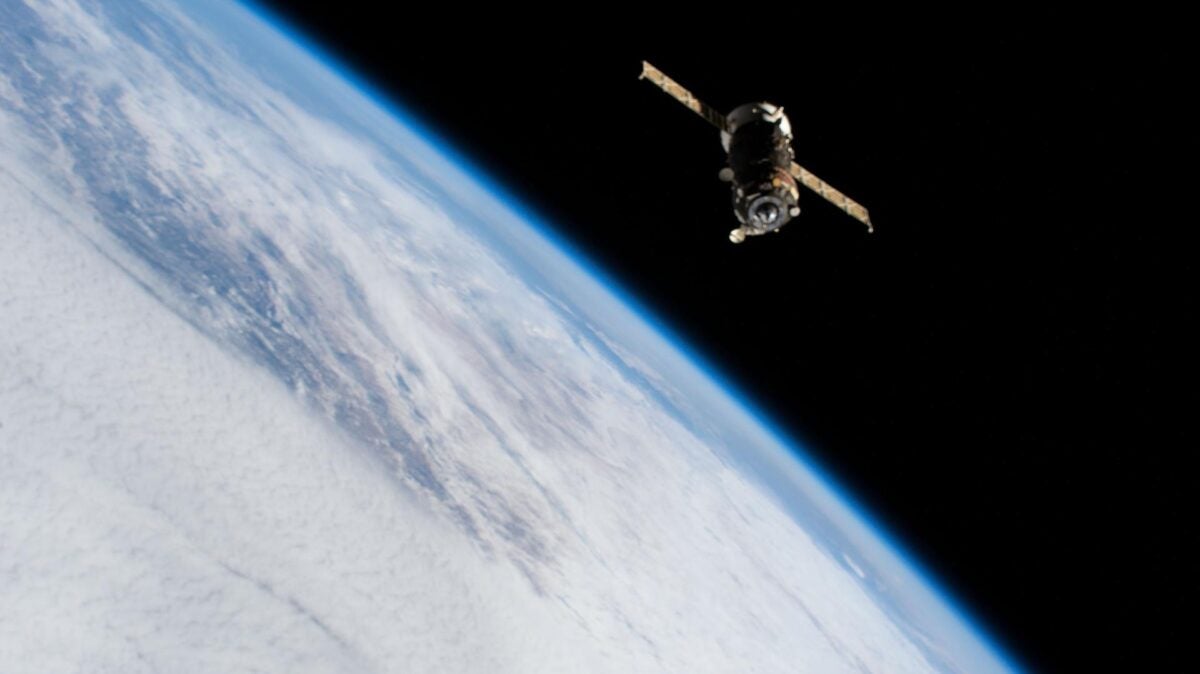U.S. government agencies see no immediate danger but are still weighing up the long-term threat from debris.

The Russian cargo resupply craft Progress 76 departs the International Space Station at the end of its mission in 2021. Credit: NASA.
A defunct Russian satellite broke up in low-Earth orbit on June 26, U.S. government and private space-tracking organizations have confirmed. The break-up resulted in over 100 pieces of trackable debris, according to U.S. Space Command in a June 27 statement. That number that is likely to grow as the full extent of the debris cloud becomes clear.
U.S. Space Command said it has “observed no immediate threats” to other satellites.
Astronauts aboard the International Space Station (ISS) were ordered to briefly seek cover in their return vehicles — including the recently arrived, recalcitrant Boeing Starliner, which is suffering from helium leaks and dead thrusters — shortly after 9 p.m. EDT on June 26 as “a standard precautionary measure.” After about an hour, NASA’s Mission Control determined the debris posed no threat to the station and the crew were allowed to resume normal operations.
The nature of the break-up remains unclear. It’s possible the satellite could have suffered an internal malfunction that caused it to explode or break up, or it could have been struck by an untracked piece of space debris that caused a failure.
Another potentially more worrying possibility is that the craft, called Resurs-P1, could have been deliberately destroyed by Russia in a test of its capabilities for anti-satellite (ASAT) warfare. It wouldn’t be the first time: Russia carried out an ASAT test Nov. 15, 2021, that destroyed Cosmos 1408, a decommissioned intelligence satellite.
That test created over 1,500 pieces of trackable debris, including at altitudes that the ISS and China’s Tiangong space station frequent. It was met with swift condemnation from U.S. and European officials for contributing to the growing threat that space debris poses to infrastructure and human life in Earth orbit. In 2022, the U.S. pledged not to perform any analogous ASAT tests of its own.
Jonathan McDowell, an astrophysicist at the Center for Astrophysics in Cambridge, Massachusetts, noted that during the reported time period of Resurs-P1’s breakup, the craft had passed over the Plesetsk Cosmodrome — the same site from which Russia’s Nudol missile had launched in the 2021 ASAT test.
“I haven’t seen reports of [Notices to Air Missions] that would suggest a Nudol’ ASAT launch, but I can’t rule it out,” McDowell wrote.
If the craft has been completely destroyed, the large size of the satellite — roughly 13,200 pounds (6,000 kilograms), according to space-tracking firm LeoLabs — could make the debris cloud much larger than in previous ASAT tests. (Cosmos 1408 weighed in at an estimated 3,860 lbs [1,750 kg].) For that reason, McDowell wrote, he thought it was less likely that it was in fact an ASAT test.
Space-tracking data showed the satellite was in a roughly circular, near polar (Sun-synchronous) orbit, at an altitude of around 221 miles (355 kilometers). The craft’s Earth-imaging capabilities spanned the visible spectrum and beyond, and had been operational for over eight years before being decommissioned in 2021. It had been used by several Russian ministries, including those for agriculture, fishing, meteorology, transportation, emergencies, natural resources, and defense, according to NASA’s Space Science Data Coordinated Archive.

